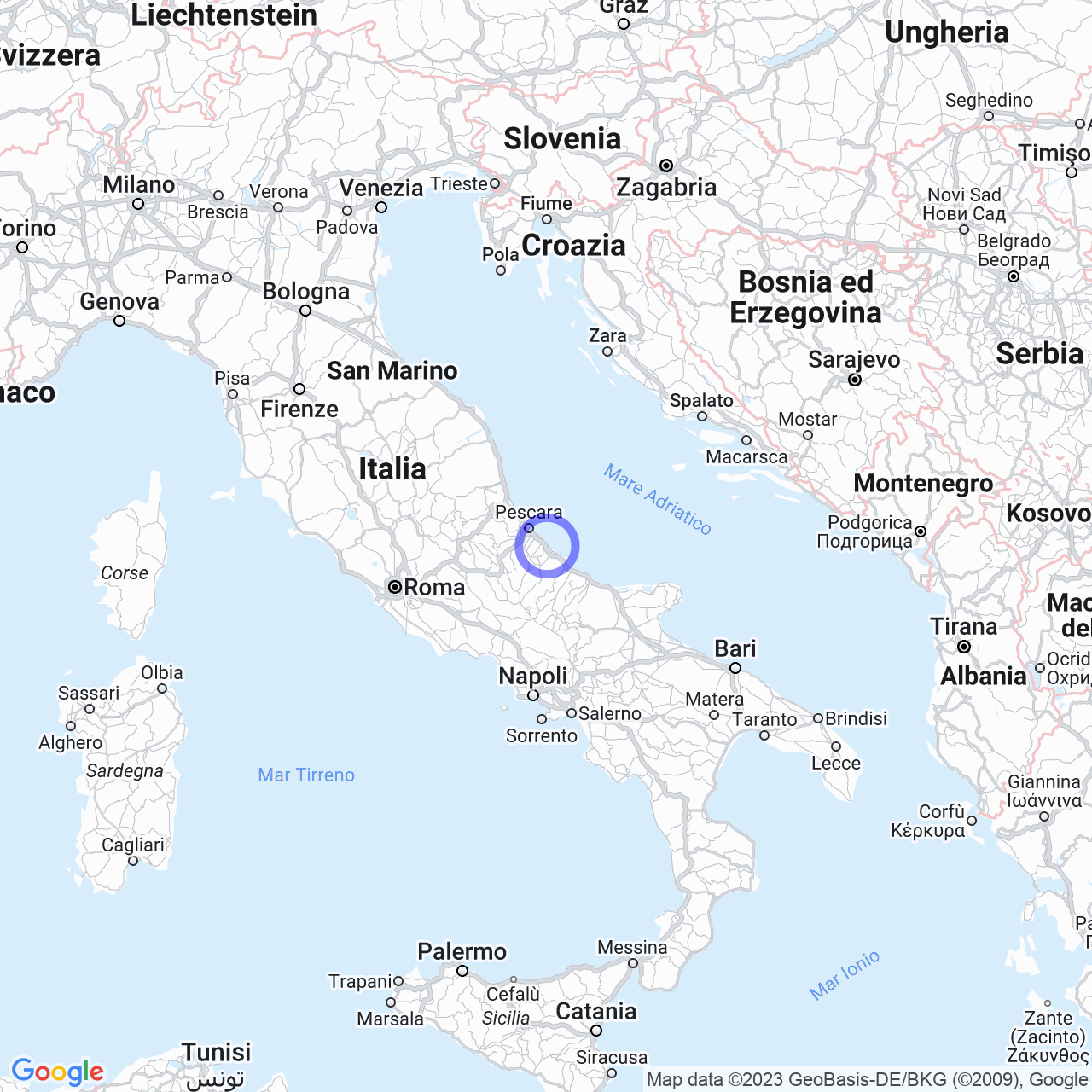San Vito Chietino
San Vito Chietino: a brief introduction
San Vito Chietino is an Italian municipality located in the province of Chieti, in the Abruzzo region. Its name is derived from the Christian martyr San Vito and the reference to the province it belongs to, Chieti. Among its attractions, the town is known to be one of the main seaside resorts on the Trabocchi Coast, with a landscape overlooking the Adriatic Sea.
The physical geography of the territory
San Vito Chietino is located on a rocky spur that reaches 263 meters and extends all the way to the sea. The town therefore enjoys a landscape overlooking the Adriatic Sea and the stretch of coast between Ortona and Vasto, famous for its trabocchi fishing huts. Inland, you can catch a glimpse of the Maiella massif, located just a few dozen kilometers from the town center, and, further away, the Gran Sasso d'Italia. San Vito Chietino borders several municipalities including Ortona, Frisa, Lanciano, Treglio, Rocca San Giovanni, and the Adriatic Sea. The municipality includes numerous localities and hamlets, among which are Marina di San Vito and Sant'Apollinare.
The climate of San Vito Chietino is mild thanks to the influence of the sea that tempers the winter cold and summer heat. The average annual temperature is 14.4°C, and the annual precipitation is around 750mm.

The history of San Vito Chietino
The first records about San Vito date back to the Roman period when there was already a Frentan port near the Feltrino stream: the port was used by the Romans for connections beyond the Adriatic Sea but also for merchant ships. Part of the old port remains in the Murata Bassa area, near the Gualdo di San Vito Marina promenade. In the village of San Vito, there was a church dedicated to San Vito Martire of early Christian times.
After the fall of the Western Roman Empire, San Vito followed the fate of the belonging area and was first occupied by the Goths, then by the Byzantine Empire and by the Lombards who founded the Duchy of Spoleto, to whom the locality belonged until the Norman conquest in the 11th century. During the Norman period, the coast experienced a period of decline, and the port was abandoned.
What to see: the trabocchi and other places of interest
One of the most evocative places in San Vito Chietino is the trabocchi, ancient wooden structures jutting out over the sea used for fishing. Today, the trabocchi have become a tourist attraction, and many of them have been renovated and converted into restaurants.
San Vito Chietino also boasts a heritage of churches and historical monuments. Among these are the Church of San Michele, the Church of Santa Maria degli Angeli, and the Church of Madonna della Neve. The historical center, characterized by alleys and small squares, still retains traces of the medieval past.
Events and traditions
San Vito Chietino hosts numerous events and traditional festivals throughout the year. Among these, the Feast of San Vito Martire, the patron saint of the town, is celebrated on June 15th with a solemn procession and traditional fireworks.
The Feast of Madonna della Porta, held on the first Saturday of August, is a night procession that culminates with the opening of the Holy Door of the Church of Madonna della Porta. In September, there is the Grape Festival, which celebrates the grape harvest with a parade of allegorical floats, wine tastings, and live music.
What to eat
The cuisine of San Vito Chietino is based on local products, including seafood, olive oil, and wine. Among the typical dishes are maccheroni alla chitarra with mullet sauce, mullet in porchetta, and fish broths. Also worth trying is the Altino bread, a naturally leavened durum wheat bread.
Conclusions
San Vito Chietino is an ideal place to spend a seaside holiday while discovering local traditions. With its trabocchi, historical churches, and typical dishes, this municipality in the province of Chieti offers an authentic experience to tourists.
